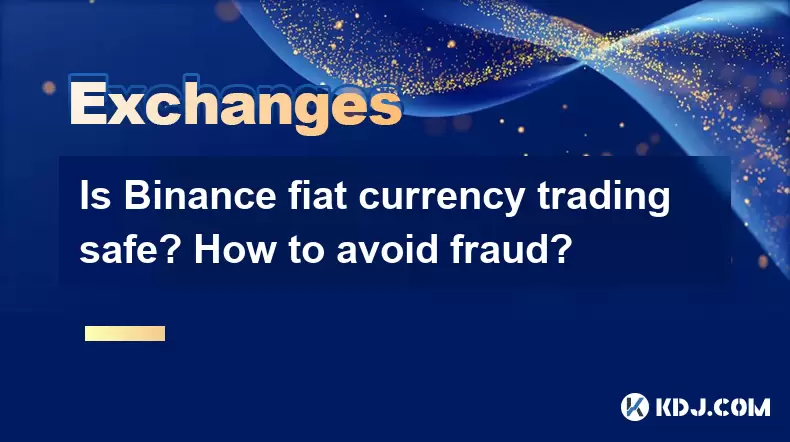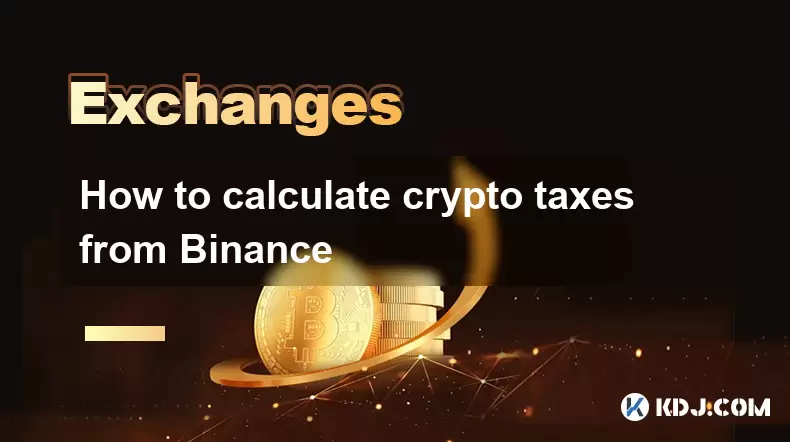-
 Bitcoin
Bitcoin $117500
2.15% -
 Ethereum
Ethereum $3911
6.19% -
 XRP
XRP $3.316
10.79% -
 Tether USDt
Tether USDt $1.000
0.01% -
 BNB
BNB $787.2
2.24% -
 Solana
Solana $175.2
4.15% -
 USDC
USDC $0.9999
0.00% -
 Dogecoin
Dogecoin $0.2225
8.40% -
 TRON
TRON $0.3383
0.28% -
 Cardano
Cardano $0.7868
6.02% -
 Stellar
Stellar $0.4382
9.34% -
 Hyperliquid
Hyperliquid $40.92
7.56% -
 Sui
Sui $3.764
7.63% -
 Chainlink
Chainlink $18.48
10.66% -
 Bitcoin Cash
Bitcoin Cash $582.1
1.88% -
 Hedera
Hedera $0.2601
6.30% -
 Avalanche
Avalanche $23.33
4.94% -
 Ethena USDe
Ethena USDe $1.001
0.02% -
 Litecoin
Litecoin $122.3
2.04% -
 UNUS SED LEO
UNUS SED LEO $8.969
-0.27% -
 Toncoin
Toncoin $3.339
0.86% -
 Shiba Inu
Shiba Inu $0.00001287
4.30% -
 Uniswap
Uniswap $10.43
7.38% -
 Polkadot
Polkadot $3.861
5.08% -
 Dai
Dai $1.000
0.02% -
 Bitget Token
Bitget Token $4.513
3.41% -
 Monero
Monero $267.7
-6.18% -
 Cronos
Cronos $0.1499
4.14% -
 Pepe
Pepe $0.00001110
5.15% -
 Aave
Aave $284.9
8.28%
Is Binance fiat currency trading safe? How to avoid fraud?
Binance offers secure fiat currency trading with 2FA, SSL encryption, and cold storage, but users must beware of phishing, scams, and fraud to trade safely.
May 17, 2025 at 04:35 pm

Introduction to Binance Fiat Currency Trading
Binance, one of the world's leading cryptocurrency exchanges, offers a platform for trading fiat currencies alongside cryptocurrencies. Fiat currency trading on Binance involves exchanging traditional currencies like USD, EUR, or GBP for cryptocurrencies or vice versa. While this service provides convenience and accessibility, it's crucial to understand the safety measures and potential risks involved to ensure a secure trading experience.
Understanding the Safety of Binance Fiat Currency Trading
Binance has implemented several security measures to protect users' funds and personal information during fiat currency trading. Two-factor authentication (2FA) is a fundamental security feature that adds an extra layer of protection to your account. Additionally, Binance uses SSL encryption to secure data transmission and cold storage to keep the majority of users' funds offline, reducing the risk of hacking.
However, no platform is entirely immune to risks. Phishing attacks, scams, and fraudulent activities are prevalent in the cryptocurrency space, and users must remain vigilant. Understanding these risks and knowing how to mitigate them is essential for safe trading on Binance.
How to Set Up and Use Binance for Fiat Currency Trading
To start trading fiat currencies on Binance, you need to follow a few steps to set up your account and initiate trades. Here's a detailed guide:
- Create a Binance Account: Visit the Binance website and click on "Register." Enter your email address and create a strong password. Complete the email verification process.
- Enable Two-Factor Authentication (2FA): Go to the "Security" tab in your account settings. Enable 2FA by scanning the QR code with an authenticator app like Google Authenticator or Authy.
- Complete KYC Verification: To trade fiat currencies, you must complete the Know Your Customer (KYC) process. Upload the required documents, such as a government-issued ID and proof of address, and wait for approval.
- Deposit Fiat Currency: Navigate to the "Buy Crypto" section and select "Credit/Debit Card" or "Bank Transfer." Follow the prompts to deposit your fiat currency into your Binance account.
- Trade Fiat for Crypto: Once your fiat deposit is confirmed, go to the "Trade" section. Select the trading pair you want (e.g., BTC/USD) and place your order.
Common Fraudulent Activities and How to Avoid Them
Fraudulent activities can pose significant risks to your funds and personal information. Here are some common types of fraud and how to avoid them:
- Phishing Scams: Phishing involves fraudulent attempts to obtain sensitive information by posing as a trustworthy entity. Always verify the URL before entering your login credentials. Binance's official URL is www.binance.com. Never click on suspicious links or download attachments from unknown sources.
- Fake Binance Websites: Scammers create fake websites that mimic the Binance platform to steal your information. Bookmark the official Binance website and access it only from your bookmarks. Be cautious of any website that looks slightly different or asks for unnecessary information.
- Impersonation Scams: Scammers may impersonate Binance customer support to trick you into revealing personal information or transferring funds. Binance will never ask for your password or private keys. If you receive such a request, report it immediately and do not comply.
- Pump and Dump Schemes: These schemes involve artificially inflating the price of a cryptocurrency to sell it at a profit, leaving other investors with losses. Research thoroughly before investing in any cryptocurrency. Be wary of unsolicited investment advice and promises of high returns.
Best Practices for Safe Fiat Currency Trading on Binance
To enhance your safety while trading fiat currencies on Binance, follow these best practices:
- Use Strong Passwords: Create a unique and complex password for your Binance account. Avoid using easily guessable information like birthdays or common words.
- Regularly Update Your Security Settings: Check your account's security settings periodically. Update your 2FA app and ensure that your contact information is current.
- Monitor Your Account Activity: Keep an eye on your account's transaction history and login activity. Report any suspicious activity to Binance support immediately.
- Withdraw Funds to a Secure Wallet: For long-term storage, consider transferring your cryptocurrencies to a hardware wallet. Hardware wallets offer an additional layer of security by keeping your private keys offline.
- Educate Yourself: Stay informed about the latest security threats and best practices in the cryptocurrency space. Follow reputable sources and participate in community discussions to enhance your knowledge.
Utilizing Binance's Security Features
Binance offers several security features that you can leverage to protect your account and funds. Here's how to use them effectively:
- Withdrawal Whitelist: Set up a withdrawal whitelist to ensure that funds can only be withdrawn to pre-approved addresses. Go to the "Security" tab, select "Withdrawal Whitelist," and add the addresses you trust.
- Anti-Phishing Code: Enable the anti-phishing code feature to add a unique code to emails sent by Binance. This helps you identify legitimate communications from the platform. Go to the "Security" tab and enable the "Anti-Phishing Code."
- Login History and Device Management: Regularly review your login history and manage the devices that have access to your account. Go to the "Security" tab, select "Login History," and "Device Management" to monitor and control access.
Frequently Asked Questions
Q: Can I trade fiat currencies on Binance without completing KYC verification?
A: No, to trade fiat currencies on Binance, you must complete the KYC verification process. This is a regulatory requirement to ensure the security and compliance of the platform.
Q: How long does it take to complete the KYC verification process on Binance?
A: The KYC verification process on Binance typically takes a few business days. However, the exact duration can vary depending on the volume of applications and the accuracy of the submitted documents.
Q: What should I do if I suspect my Binance account has been compromised?
A: If you suspect your account has been compromised, immediately change your password, enable 2FA if not already done, and contact Binance support. Monitor your account activity closely and consider withdrawing your funds to a secure wallet.
Q: Are there any fees associated with fiat currency trading on Binance?
A: Yes, Binance charges fees for fiat currency deposits and withdrawals, as well as trading fees for buying and selling cryptocurrencies. The specific fees depend on the payment method and the trading pair you use. Always check the fee schedule on the Binance website for the most current information.
Disclaimer:info@kdj.com
The information provided is not trading advice. kdj.com does not assume any responsibility for any investments made based on the information provided in this article. Cryptocurrencies are highly volatile and it is highly recommended that you invest with caution after thorough research!
If you believe that the content used on this website infringes your copyright, please contact us immediately (info@kdj.com) and we will delete it promptly.
- Tron's Sell-Off Spurs Altcoin Shift: What's Next for TRX?
- 2025-08-08 08:30:12
- RUVI Presale: Is the Growth Potential Real?
- 2025-08-08 09:10:12
- Sleep Token's US Takeover: Thornhill Rides the 'Even In Arcadia' Wave
- 2025-08-08 08:30:12
- FTT Token's Wild Ride: Creditor Repayments vs. Market Drop - A New Yorker's Take
- 2025-08-08 07:10:12
- Floki Crypto Price Prediction: Riding the Robinhood Rocket or Just a Meme?
- 2025-08-08 07:15:12
- EigenLayer, Restaking, and Ethereum: Navigating the Hype and the Hazards
- 2025-08-08 06:30:12
Related knowledge

How to use margin trading on Poloniex
Aug 08,2025 at 09:50am
Understanding Margin Trading on Poloniex

How to use advanced trading on Gemini
Aug 08,2025 at 04:07am
Understanding Advanced Trading on GeminiAdvanced trading on Gemini refers to a suite of tools and order types designed for experienced traders who wan...

How to deposit USD on Bitstamp
Aug 07,2025 at 05:18pm
Understanding Bitstamp and USD DepositsBitstamp is one of the longest-standing cryptocurrency exchanges in the industry, offering users the ability to...

How to use the Kraken Pro interface
Aug 08,2025 at 09:57am
Understanding the Kraken Pro Interface LayoutThe Kraken Pro interface is designed for both novice and experienced traders seeking a streamlined experi...

How to find my transaction ID on Gemini
Aug 08,2025 at 12:50am
Understanding the Transaction ID in Cryptocurrency ExchangesA transaction ID (TXID) is a unique alphanumeric string that identifies a specific transfe...

How to calculate crypto taxes from Binance
Aug 08,2025 at 07:56am
Understanding Cryptocurrency Taxation on BinanceCalculating crypto taxes from Binance requires a clear understanding of how tax authorities classify d...

How to use margin trading on Poloniex
Aug 08,2025 at 09:50am
Understanding Margin Trading on Poloniex

How to use advanced trading on Gemini
Aug 08,2025 at 04:07am
Understanding Advanced Trading on GeminiAdvanced trading on Gemini refers to a suite of tools and order types designed for experienced traders who wan...

How to deposit USD on Bitstamp
Aug 07,2025 at 05:18pm
Understanding Bitstamp and USD DepositsBitstamp is one of the longest-standing cryptocurrency exchanges in the industry, offering users the ability to...

How to use the Kraken Pro interface
Aug 08,2025 at 09:57am
Understanding the Kraken Pro Interface LayoutThe Kraken Pro interface is designed for both novice and experienced traders seeking a streamlined experi...

How to find my transaction ID on Gemini
Aug 08,2025 at 12:50am
Understanding the Transaction ID in Cryptocurrency ExchangesA transaction ID (TXID) is a unique alphanumeric string that identifies a specific transfe...

How to calculate crypto taxes from Binance
Aug 08,2025 at 07:56am
Understanding Cryptocurrency Taxation on BinanceCalculating crypto taxes from Binance requires a clear understanding of how tax authorities classify d...
See all articles

























































































